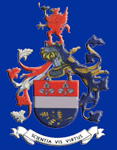 6th International Conference on Enterprise Information Systems |
Tutorials |
|
|
Workshops Camera-Ready Submission and Registration: 1st March 2004 |
|
Call
For Papers |
|
Accepted Papers |
|
|
Conference Program |
|
|
Organized by: Co-organized by: |
|
|
|
|
|
|
| Tutorial 1 |
| Competitive Engineering: A totally metrics-based system-development method |
 |
Prof.
Tom Gilb |
Some systems engineering is done in continuous international competition. For example telecommunications products. For example military systems. The problem is not merely to get it done well on time, but to visibly beat the competition in quality and price while also beating them on time to market. There are specific engineering methods and processes that emphasize the ability to 'beat the enemy'. This tutorial will highlight the specific methods we can offer to aid the competitive engineering process. The methods are innovative and the key idea is the ability to quantify all critical qualitative aspects of a system, not just the conventional ones.
1. Planguage: a quantified planning language.
2. Integrating benchmarks and requirement targets
3. Quantified Quality Control of specifications
4. Impact Estimation Tables for quantified evaluation of design
5. Evolutionary Project Management
| Tutorial 2 |
| Model Checking and Theorem Proving-Based Verification of EIS |
 |
Dr.
Juan Carlos Augusto |
Ensuring reliability of software has always been,
and will continue to be, one of the most challenging problems in Software
development. Throughout the last decades several techniques and their
associated tools were developed to provide Verification of correctness for
the expected behaviour of a system. The underlying idea is that by studying
the possible behaviours of a system at the early stages of its development
many mistakes can be avoided, the confidence in the final product increased
and the costs of producing the product reduced.
Model checking is one of the most successful applications of formal methods to verification of software in Businesses and Industry-related systems. Theorem proving is another strategy available and different from model checking in many aspects. Both have been used effectively in many important applications.
This tutorial will start providing the basic concepts underlying both major techniques, Model Checking and Theorem Proving as applied to Verification. Then a model Checker, SPIN, and a Theorem Prover, STeP, will be presented. The examples provided will illustrate their potential but also will unveil their limitations. As a result, the audience will gain a basic understanding about the benefits, areas of application and differences between both verification strategies.
| Tutorial 3 |
| From Components to Web Based Services |
 |
Prof.
Balbir S. Barn Web Page |
This tutorial provides the context necessary to understand: Component based development and Web Services based Application Assembly and the relationships between these two approaches. The importance of this tutorial is three-fold:
- It provides an introduction to the fundamental technologies and emerging standards for Web Services. There are a number of different technologies and standards, which contribute to this approach. Each of these is examined in terms of how that technology has come to be, its major strengths and weakness, and the directions in which it is likely to evolve.
- Rather than simply enumerate individual technology and standard advances, a holistic view how each technology contributes to the larger goal of Web Services is provided. Hence, attendees can put each technology advance into the context required for a more complete understanding of its relevance and impact.
- While the academic background of these technologies is discussed, the tutorial is predominantly practical in nature. Wherever possible the technologies are discussed with respect to their impact on current and future software engineering practice as experienced by a wide range of practicing software engineers.
Having attended this tutorial, the attendee will be better able to understand the key technology advances in software development as they affect Web Services, and hence be in a better position to take advantage of them in their work setting.
Copyright © INSTICC
Page Updated on
19-10-2006

